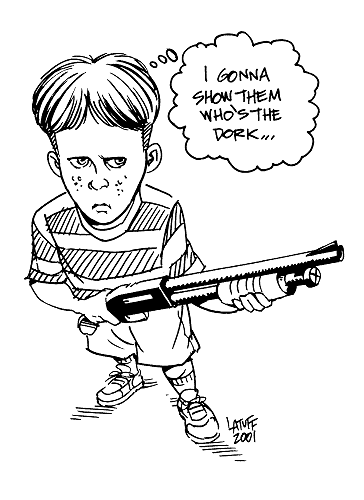Donald Trump’s “Death Wish” fantasies: Guns, white vigilantism, and the right’s toxic masculinity
In the age of the "cuckservative" slur, Trump's "Death Wish" chant is a revealing glimpse into the right-wing id
By Chauncey DeVega
Popular culture is a space onto which a society’s anxieties, fears, worries, and values are projected. It’s also a powerful tool of political socialization that gives the members of a society a way of making sense of the world around them—and their location in it. The “Death Wish” movie series reflected the racial and class anxieties of Reagan-era America and the early 1990s. Like its counterpart “Dirty Harry,” “Death Wish” was a space for (White) American wish fulfillment, one where black and brown “thugs” (along with token white “gangbangers” or “outlaw bikers”) in America’s urban centers were killed without mercy by avenging agents of justice and vigilantism. Complex problems such as crime, deindustrialization, and poverty are easily solved by violent cops such as “Harry Callahan” in “Dirty Harry,” or “the common man” like “Paul Kersey” in “Death Wish,” men who pick up a gun and dispatch “thugs” like so much human debris. Public policies that demand institutional change and billions of dollars are less preferable alternatives to guns and bullets that cost a relative pittance.
Death Wish reflected a broader socio-political imaginary where roving bands of black and brown criminals laid waste to major cities like Chicago, New York, and Los Angeles. White suburban flight and segregation was rationalized as the reasonable response of Nixon’s “silent majority” to the predations of “black crime” and feral black youth who went “wilding” before they supposedly raped white women and beat down white men in places like New York’s Central Park.
The crack epidemic and the War on Drugs demanded mass incarceration of black and brown bodies: the filmic imagination of 1980s action movies provided the justification for such an agenda. In addition, the police in movies such as “Death Wish,” the “Dirty Harry” series, and “Fort Apache the Bronx,” were depicted as outgunned, incompetent, corrupt—or sometimes all three—thus, the need for a hyper-militarized police force that terrorizes black and brown communities as was recently seen during the Ferguson and Baltimore uprisings.
“Death Wish” and similar American films in the genre were also spaces where generational tensions could be resolved with violence—older white Americans who remember “the good old days” of fictive white suburbia, full employment, and real “family values” would often move from being prey to being victors and vigilantes. The movie “Death Wish 3,” even featured the great character actor Martin Balsam, helping Charles Bronson, himself now in his 60s, to form a militia of gray haired warriors who fought off a murderous and rapine group of young toughs. The World War 2 generation would demand respect from the barrel of a pistol—or, as in “Death Wish 3,” from a .30 caliber Browning machine gun.
Ronald Reagan would famously quote Clint Eastwood’s character “Dirty Harry” saying “make my day” as the latter is about to kill a black “criminal” with “the most powerful handgun in the world, and would blow your head clean off”—a potent scene in modern American cinema in which guns, race, white male insecurity, and phallocentrism intersect as Eastwood, holding his huge penis in the form of a .44 Magnum pistol, threatens a subdued black man, here the myth of the big black penis is beaten back by assertive white masculinity, a scene perfect for today’s movement conservatives and their “cuckservative” psycho sexual obsessions.


No comments:
Post a Comment